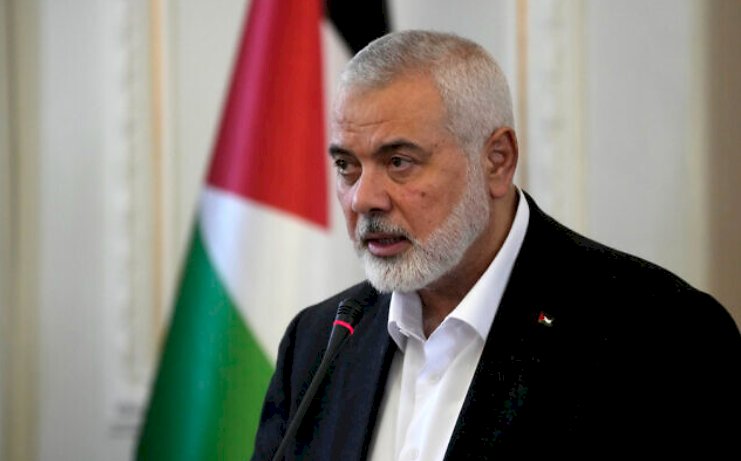Ismail Haniyeh: Navigating the Palestinian Struggle from Refugee to Political Icon
Hamas’s political chief, Ismail Haniyeh, was killed in Tehran in what the Palestinian group governing Gaza has attributed to an Israeli airstrike. His death was confirmed in separate statements by both Hamas and Iran’s elite Islamic Revolutionary Guard Corps. According to Hamas, Haniyeh died in a Zionist strike on his headquarters in Tehran following his participation in the inauguration of Iran's new president. The airstrike reportedly occurred at around 2:00 local time. Haniyeh, originally from Gaza but who had been living in Qatar for several years, was in Tehran to attend the inauguration when the fatal attack took place.
Haniyeh’s death marks the loss of a pivotal figure in Hamas and Palestinian politics. Throughout his career, Haniyeh was known for his steadfast leadership and significant contributions to the Palestinian cause. He rose to prominence as the head of the Change and Reform list, leading Hamas to a majority victory in the 2006 Palestinian legislative elections.
Early Life and Education
Ismail Abdel Salam Ahmed Haniyeh, born on January 23, 1962 (or 1963), in the Al-Shati refugee camp in Gaza, grew up amidst the Palestinian refugee crisis. His family was displaced from the village of Jura, near Ashkelon, during the 1948 Arab-Israeli conflict. Haniyeh's early education was in UNRWA schools, and he completed his secondary education at the Al-Azhar Institute. He later attended the Islamic University of Gaza, earning a Bachelor’s degree in Arabic literature in 1987.
Political Activism and Rise in Hamas
Haniyeh was active in the student union during his university years and became an influential figure in Hamas, the Islamic Resistance Movement. His political career was marked by multiple imprisonments by Israeli authorities. Haniyeh was first arrested in 1987 during the First Intifada, spending 18 days in jail, followed by a six-month detention in 1988. He was imprisoned again in 1989 for three years on charges of Hamas membership, after which he was exiled to Marj al-Zuhur in South Lebanon for a year before returning to Gaza under the Oslo Accords
In 1992, he became the dean of the Islamic University of Gaza and took on a significant role in Hamas by leading the office of Sheikh Ahmed Yassin, the founder of Hamas, after Yassin's release by Israel in 1997.
Leadership in Hamas and Prime Ministership
Haniyeh's prominence in Hamas continued to grow, leading to his election as the head of the Change and Reform list, which secured a majority in the 2006 Palestinian legislative elections. Consequently, he was appointed as the Prime Minister of the Palestinian National Authority. However, his tenure was fraught with challenges, including assassination attempts and political conflicts, particularly with Fatah, led by President Mahmoud Abbas.
In June 2007, following a violent conflict between Hamas and Fatah, Haniyeh was dismissed by Abbas. Despite this, he continued to lead the de facto Hamas government in Gaza, a position he held amidst a complex political and military landscape, including repeated Israeli military operations targeting Hamas leaders and infrastructure.
Attempts at Reconciliation and Continued Influence
Throughout his leadership, Haniyeh sought to bridge gaps with the Palestinian Authority, expressing willingness to resign in favor of a unity government. This effort culminated in forming a new government in June 2014, led by Rami Hamdallah, to foster Palestinian reconciliation.
In May 2017, Haniyeh was elected as the chief of Hamas' political bureau, succeeding Khaled Meshaal. His election underscored his enduring influence within the movement and his ability to navigate its internal dynamics and external pressures.
Designation as a Terrorist and Recent Developments
In January 2018, the U.S. State Department designated Haniyeh as a global terrorist. This move heightened tensions between Hamas and the United States, particularly following the controversial U.S. decision to recognize Jerusalem as Israel's capital.
The escalation of violence in Gaza continued to mark Haniyeh's leadership. In October 2023, Hamas launched a significant operation, "Al-Aqsa Flood," which led to intense Israeli military retaliation. This period witnessed the targeting and killing of several of Haniyeh's family members by Israeli forces.
Assassination in Tehran
On July 31, 2024, Haniyeh was assassinated in Tehran, Iran, in what Hamas described as an Israeli airstrike. His death marked a significant moment in the ongoing Israeli-Palestinian conflict, further complicating the geopolitical dynamics of the region.
Legacy
Ismail Haniyeh's legacy is characterized by his steadfast leadership in Hamas, his role in the Palestinian struggle, and his efforts toward Palestinian unity. Despite the numerous challenges and personal losses, Haniyeh remained a pivotal figure in the Palestinian resistance, leaving a lasting impact on the movement and its future trajectory.
This report encapsulates the life, political career, and legacy of Ismail Haniyeh, highlighting his journey from a refugee camp in Gaza to becoming a prominent leader of Hamas. His story is a testament to the complex and often turbulent nature of Palestinian political life and the broader Middle Eastern conflict.
Disclaimer
The views expressed in this article are the author’s own and do not necessarily mirror Islamonweb’s editorial stance.
























Leave A Comment